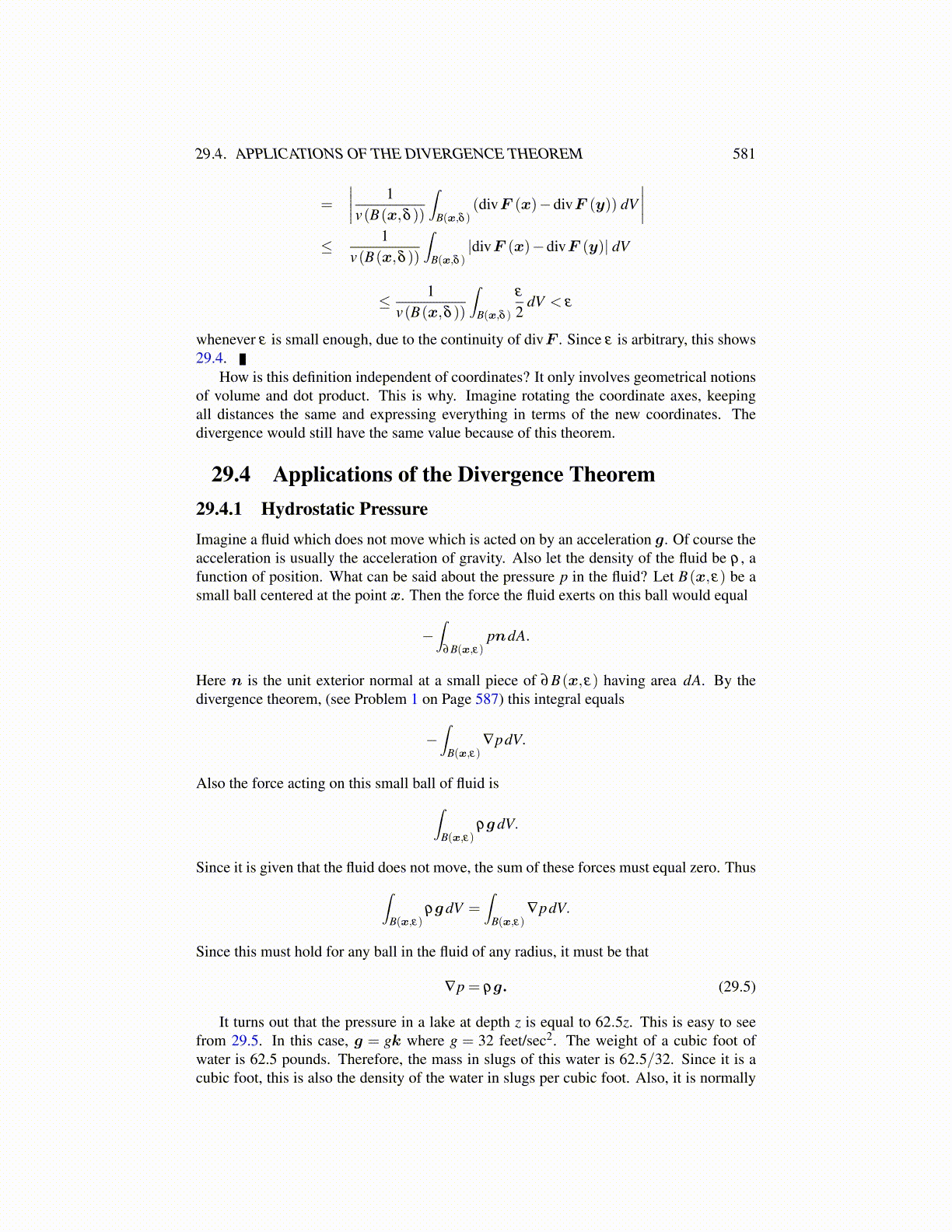
29.4. APPLICATIONS OF THE DIVERGENCE THEOREM 581
sented by the usual matrix, whose i jth entry is given by
Fi j (x) =∂yi (t,x)
∂x j.
Let ρ (t,y) denote the density of the material at time t at the point y and let ρ0 (x) denotethe density of the material at the point x. Thus ρ0 (x) = ρ (0,x) = ρ (0,y (0,x)). The firsttask is to consider the relationship between ρ (t,y) and ρ0 (x). The following picture isuseful to illustrate the ideas.
x y = y(t,x)V0
N
Vt
ny
Lemma 29.4.1 ρ0 (x) = ρ (t,y (t,x))det(F) and in any reasonable physical motiondet(F)> 0.
Proof: Let V0 represent a small chunk of material at t = 0 and let Vt represent the samechunk of material at time t. I will be a little sloppy and refer to V0 as the small chunkof material at time t = 0 and Vt as the chunk of material at time t rather than an open setrepresenting the chunk of material. Then by the change of variables formula for multipleintegrals, ∫
Vt
dV =∫
V0
|det(F)| dV.
If det(F) = 0 for some t the above formula shows that the chunk of material went frompositive volume to zero volume and this is not physically possible. Therefore, it is impos-sible that det(F) can equal zero. However, at t = 0, F = I, the identity because of 29.9.Therefore, det(F) = 1 at t = 0 and if it is assumed t → det(F) is continuous it follows bythe intermediate value theorem that det(F)> 0 for all t.
Of course it is not known for sure that this function is continuous but the above showswhy it is at least reasonable to expect det(F)> 0. General arguments involve measure andthe Lebesgue integral. As usual, one neglects mathematical rigor in derivations of physicalformulae.
Now using the change of variables formula
mass of Vt =∫
Vt
ρ (t,y) dV (y) =∫
V0
ρ (t,y (t,x))det(F) dV (x)
= mass of V0 =∫
V0
ρ0 (x) dV.
Since V0 is arbitrary, it follows
ρ0 (x) = ρ (t,y (t,x))det(F)
as claimed. Note this shows that det(F) is a magnification factor for the density.Now consider a small chunk of material, Vt at time t which corresponds to V0 at time
t = 0. The total linear momentum of this material at time t is∫Vt
ρ (t,y)v (t,y) dV